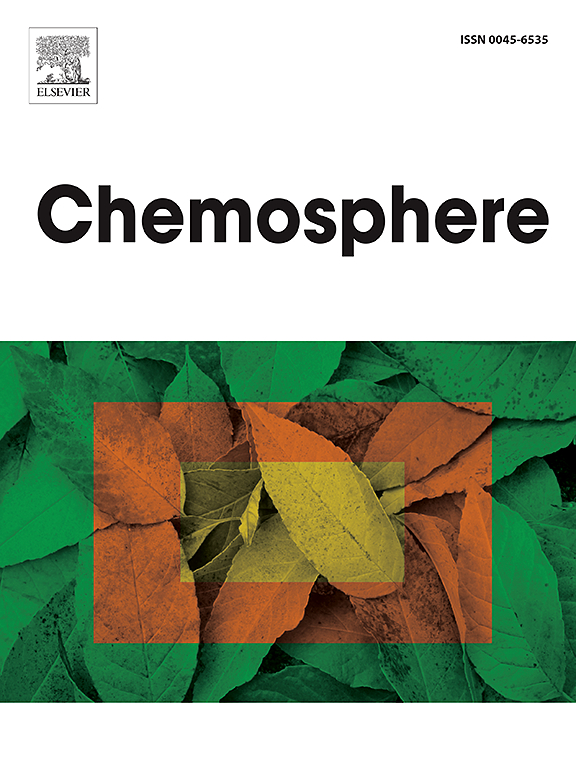Biomimetic Nanoarchitectonics of Ag@TiO2/g-C3N4: Unveiling kinetic and mechanistic pathways for enhanced photocatalysis
IF 8.1
2区 环境科学与生态学
Q1 ENVIRONMENTAL SCIENCES
引用次数: 0
Abstract
In the pursuit of eco-friendly solutions for environmental remediation, the development of efficient photocatalyst is paramount. In this study, we report the biomimetic nanoengineering of ternary Ag@TiO2/g-C3N4 nanocomposites (NCs) using papaya leaf extract (PLE). These hybrid photocatalysts have been designed for the degradation of diverse hazardous water contaminants, including Doxycycline (DCy) antibiotic, dinotefuran (DNF) insecticide and indigo carmine (IC) dye under sunlight irradiation. Various spectroscopic and microscopic techniques viz.XRD, UV-DRS, FT-IR, XPS, HR-TEM, FE-SEM, and EDX were employed to verify the successful tailoring of ternary nanocomposites. Among the synthesized NCs, 1 wt% Ag@TiO2/g-C3N4 NCs demonstrated superior photocatalytic efficiency, achieving mitigation of DCy (97.75%; k = 4.2 × 10−2 min−1), IC (98.92%; k = 10.2 × 10−2 min−1), and DNF (94.77%, k = 4.88 × 10−2 min−1). Moreover, the prepared nanocatalysts displayed remarkable stability and reusability over multiple degradation cycles, maintaining their crystalline structure. This work not only offers a potent and green photocatalyst for environmental cleanup but also underscores the importance of sustainable nanomaterial synthesis. The findings of this study pave the development of versatile, eco-conscious nanomaterials with broad applications in removal of hazardous materials and sustainable water purification.

求助全文
约1分钟内获得全文
求助全文
来源期刊

Chemosphere
环境科学-环境科学
CiteScore
15.80
自引率
8.00%
发文量
4975
审稿时长
3.4 months
期刊介绍:
Chemosphere, being an international multidisciplinary journal, is dedicated to publishing original communications and review articles on chemicals in the environment. The scope covers a wide range of topics, including the identification, quantification, behavior, fate, toxicology, treatment, and remediation of chemicals in the bio-, hydro-, litho-, and atmosphere, ensuring the broad dissemination of research in this field.
 求助内容:
求助内容: 应助结果提醒方式:
应助结果提醒方式:


